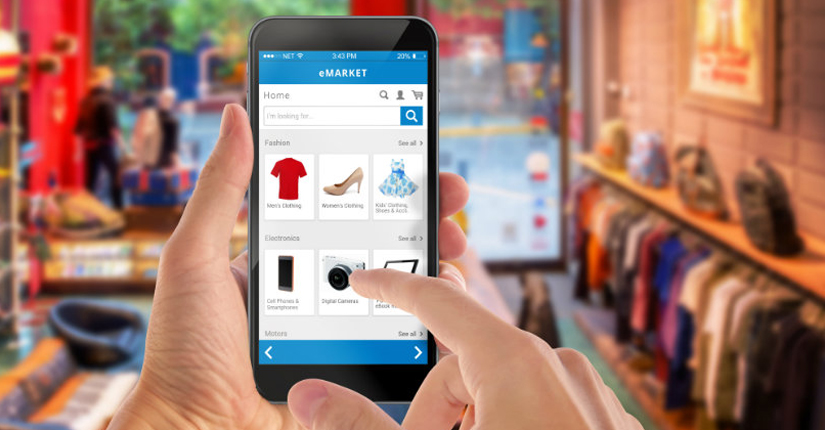Unlock Expert Advice with Zero Commitment.
We’ve Eliminated the Barriers.

Mobile web or mobile app? The topic is raged for years. You will be pleased to know that there is an emerging solution. Progressive Web Apps (PWA) take advantage of the strengths of both to create a better experience.
Let’s find out what Progressive Web Apps can do for the users and for your business. Being one of the pioneer web application development company in NYC, we will go in-depth into the advantages of PWAs – because we believe it’s an option that should not be left unexplored.
A PWA delivers an app-like user experience through your mobile phone’s browser. It has the same flexibility and gestures like a native application. PWAs are powered by mobile browsers and are not specific to any one devices. It simply means that developers don’t need to write separate codes for Android and Apple devices.
• PWAs have the functionality of both websites and mobile applications.
• PWAs deliver improved performance than both websites and mobile application.
• Work online and offline and can be fully functional in both aspects.
• Some browsers automatically prompt them to install the progressive web app for them.
• Developers don’t need to submit their PWAs and wait for the app store’s approval.
Progressive web apps (PWA) bridge the gap between websites and mobile apps. It promises offline proficiencies and improved speed and performance. Businesses can actually gain a lot from implementing these technologies. PWAs have given AliExpress, Google, and Flipkart a superb increase in retention and conversion rates. Utilizing the best method from both worlds, PWAs provide an improved user experience, increased conversion rates, and better visitor engagement.
This maybe one the top reason why PWAs will be more than a trend in the mobile experience. There is not really any conflict between a user finding your company and accessing your PWA. Think about a conventional native application. A user must go to the app store, search for application, sit tight for the application to download, grant permission, and then it’s ready to use.
With a PWA, your customer just requires to find your site through a Google search, and afterwards, they’re promptly launched into your PWA. No downloading, no waiting. There’s also decreased user friction since they don’t have to worry about utilising additional data to download your application. They don’t have to delete your application when they require more storage on their phone.
Service employees utilize Cache and Fetch APIs to quickly load your PWA, which means it invests less time trying to load content. These capacities additionally enable users to load the PWA offline from the home screen.
Regardless of whether a user has no internet connection, your PWA can still send push notifications and background updates to the user.
When you launch a PWA in your browser, you get the overall native app experience. The shell of the PWA resembles an application and mimics any motions you may get in a customized native app.
PWAs can likewise oversee loyalty programs, online ordering, and customer information. You can also prompt your user to save your PWA to their home screen as a shortcut. So, they can instantly access whenever they need. You get the full native app usefulness including push notifications.
Cyber security is a subject on everybody’s mind. New principles in website design are urging web developers to move any sites that deal with client information to HTTPS. Previous standards, i.e., HTTP, were not sufficiently secure to ensure customer information assurance.
Since more websites are being modified in HTTPS, it’s easier to introduce a PWA in a protected environment. Customers will have peace of mind when they enter individual information or credit card information into your PWA via a secure connection.
PWAs are unbelievably reliable when the question arises for speed. Java Scripts that run independently from the main web thread, enable your PWA to load about immediately, regardless of how poor the connection is.
PWAs by nature are quick to catching information in the application and browser. They have smooth navigation, animations, and scrolling to give the illusion a user feels in a native application.
Another advantage of developing a PWA rather than a native application is you don’t have to send new requests to the app stores when you have to modify, adjust a procedure which can take up to a week.
For instance, if find a critical bug in your native application, your developer needs to discover the problem, fix it, send the update to Apple and Google, wait for them to review, and then the new update will be accessible to your users.
With PWAs, you can launch promptly. You additionally needn’t bother with two separate code bases for Android and Apple devices.
Companies that have executed PWAs have received unbelievable returns on their investment regarding revenue and engagement.
• Twitter had received a 75% increase in tweets sent and 20% decrease in bounce rate.
• Flipkart with 70% increase in conversions, triples time-on-site with PWAs.
• Alibaba.com, the world’s largest online B2B trading platform, saw a 76% rise in conversions and four times higher interaction rate by upgrading the site to a PWA.
• MakeMyTrip.com saw 160% increase in shopper sessions.
• Lancôme saw a 53% increase in iOS mobile sessions and 17% increase in conversions.
As we have previously said, native apps aren’t leaving anytime soon. Yet, we trust we’ll witness a huge movement in PWA development as E-Commerce websites, media sources, and restaurants hope to acquire more audience and get the most return on their investment. You should absolutely consider a PWA. It will make your users happy and finally, it will help your business grow.
We’ve Eliminated the Barriers.
We stand by our work, and you will too.